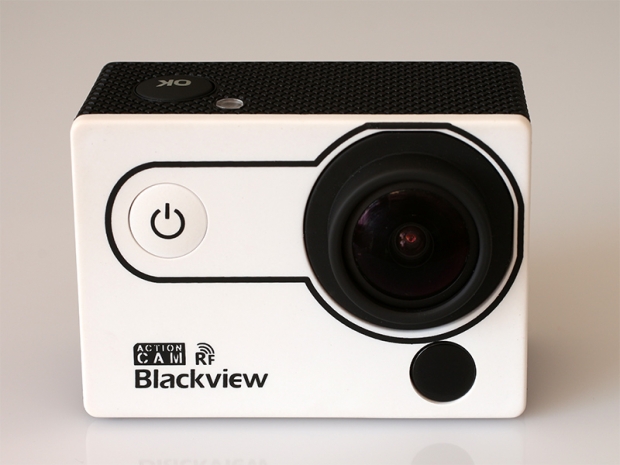Index
Review: We can be heroes, just for one day
Action cameras seem to be the trend of the season, and this summer is shaping up to be very hot for these rugged devices.
Usually, people who used these tiny, indestructible cameras were associated with extreme sports, but lately we see many tourists with these cameras and smartphones on selfie sticks. So if you want to stand out from the crowd and film your vacation in wide angle, perhaps it is time to try an action camera. It is probably wiser than waving your expensive smartphone around on a $5 stick and breaking it (breaking the phone, not the stick).
It all started back in 2006 when California-based GoPro released its first Digital Hero camera and created a whole new product segment for inexpensive digital action cameras. The basic requirement for these products are: fast and wide lens with fixed focus and zoom, water- and shock-proof housings, very small and lightweight camera body, loads of accessories and different camera mounts for a range of shooting scenarios.
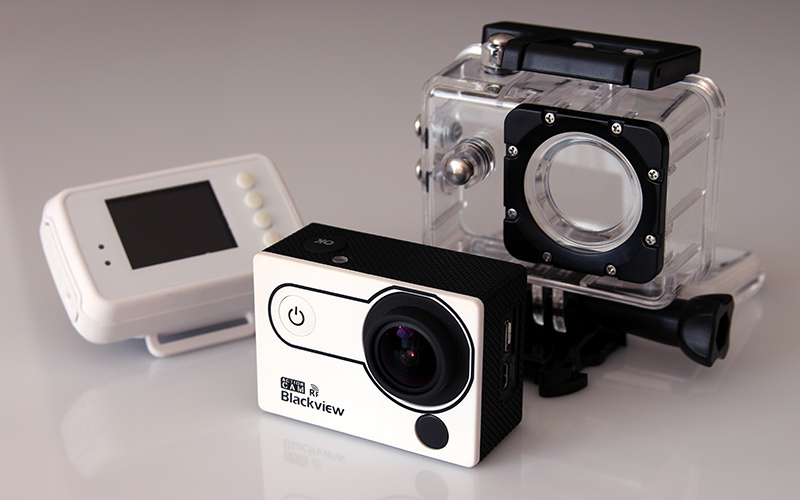
Fast forward to 2015, and many companies are offering this type of device. A few big players like HTC and Xiaomi are getting on board as well, and we are seeing a flood of Chinese action cameras, promising advanced features at entry-level prices.
This applies to the Blackview Hero 2 RF, with a price tag of $139 for the complete package, which is coincidentally the same price you would pay for the current GoPro Hero entry level model. Blackview is already a familiar name in the smartphone segment and now they are entering the action camera race as well.
Retail Packaging and Accessories
The Blackview Hero 2 RF arrived in a very attractive retail pack, very similar to GoPro Hero advanced models. A transparent plastic cube covers the camera and the RF remote, while the bottom cardboard part of the package contains a USB charger (5V 2A), USB cable, user manual and a whole range of camera mounts and accessories.
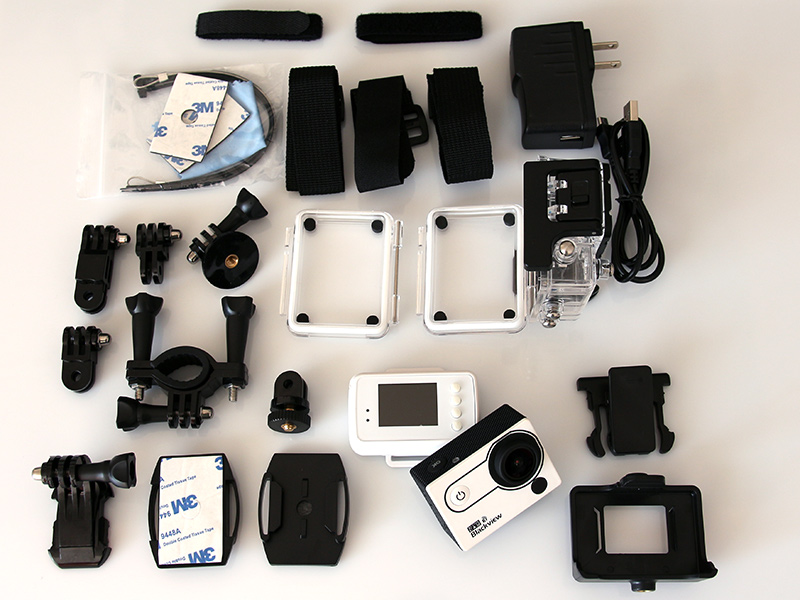
The full package contents are: Blackview Hero 2 RF camera, RF wireless remote, battery, charger, USB cable, protective camera case with two back doors (waterproof and cut-out) and a GoPro mount, skeleton camera case with two standard photo 1/4“-20 UNC threads for tripods (top and bottom threads), clamp that attaches to the back of the skelton case, two clip bases with adhesive 3M tape, two spare peices of adhesive 3M tape, two different clip mounts, GoPro mount with standard photo thread, GoPro mount with standard photo screw, bycicle mount, three different GoPro switch adapters, three strong and wide adjustable straps, two smaller velcro straps, short piece of wire rope, four cable binders, a small microfiber cloth and, lastly, a user manual.
This is a really generous accessory pack bundled with the camera, and you should have no trouble attaching the camera to almost anything if you play around with the supplied accessories. Now, let's take a look under the bonnet.
Blackview Hero 2 RF Specifications
- Image Sensor: OmniVision OV4689
- Chipset: Ambarella A7LA50
- Display: 2-inch 480 x 240 pixel LCD screen
- Lens: F2.0 170 degree wide lens
- Battery: Removable Li-Ion 1050mAh battery with 60 minutes recording time at 1080p 30fps
- Storage: MicroSD card slot, max. 64GB supported
- Video formats: Encoding format H.264, video format .MOV
- Video resolutions: 720P (1280 x 720), 1269P (2304 x 1296), 2560x1080, 1080P (1920 x 1080)
- Video System: PAL, NTSC
- Video Frame Rate: 30fps, 45fps, 60fps
- Video Output: HDMI
- Image Format: JPG
- Still Image Resolution: 4M (2688x1512), 9M (4000x2250), 16M (5312x2988), 14M (4800x2700)
- Audio System: Built-in microphone/speaker (AAC)
The official spec on the manufacturer’s website also claims burst photo mode and time lapse capabilities, along with 4x digital zoom. We will get to this later.
Interestingly, the OmniVision OV4689 is a native 4-megapixel 16:9 image sensor designed for video surveillance cameras, capable of capturing 4-megapixel HD video at 90fps, 1080p HD at 120fps and 720p HD at 180fps. The sensor also supports full resolution HDR video and promises excellent low light sensitivity. We will see how the image sensor performs paired with the Ambarella A7LA50 chipset.
After we tried out the camera, we have to correct some of the specs listed above.
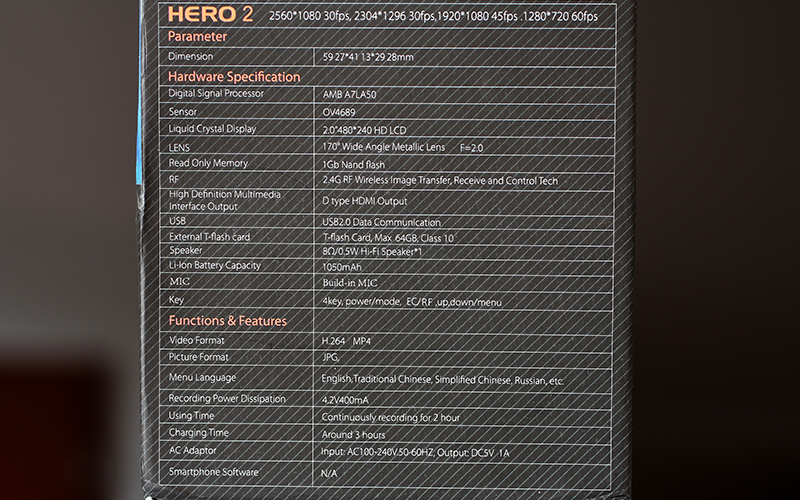
We found that 30fps is actually recorded as 29.97fps, and 60 fps is actually 59,94fps, which is not a big deal, but it is important to know if you are going to edit your videos in a NLE video editing system later on. Also, 59.94fps can only be used with 720p video mode, while 1080p works with 29.97fps or 45fps. With 2.7K 2304 x 1296 and 2560x1080 shooting modes, you are limited to 29.97fps. The format of the recorded H.264 video is not .MOV, it is actually .MP4.
Also, there is no photo burst mode or time lapse mode. Digital zoom is missing too, and these options are simply not available in the settings menu. It seems as if Blackview rushed the Hero 2 launch, as the current firmware (DV800B-2015-05-14) does not support these features. We can only hope that a firmware update will address these shortcomings. The ability to shoot a few dozen photos in burst mode, or to leave your weatherproof camera somewhere to capture a time lapse video sounds tempting. While these features are not a huge deal on mobile phones, we think they are very relevant on an action camera.
Design and Build Quality
The camera itself is tiny by any standard, measuring only 59mm in width, 41mm in height and 29mm in depth (including the protruding lens), and weighing in at 68 grams with battery. The design is minimalistic, featuring only 4 buttons on the camera body.
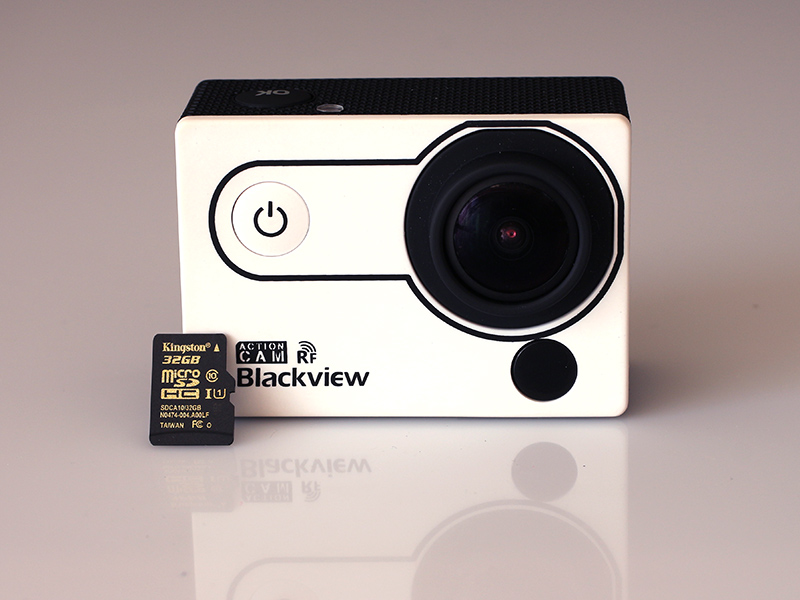
The front side features the f2.0 170-degree wide lens and the on/off button.
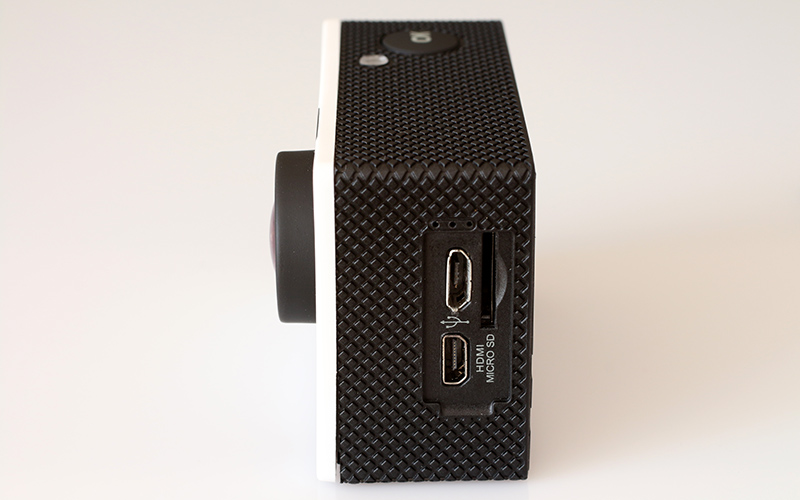
On the left side you will find the MicroSD slot, micro USB and type-D micro HDMI connectors, as well as three small cutouts for the microphone.
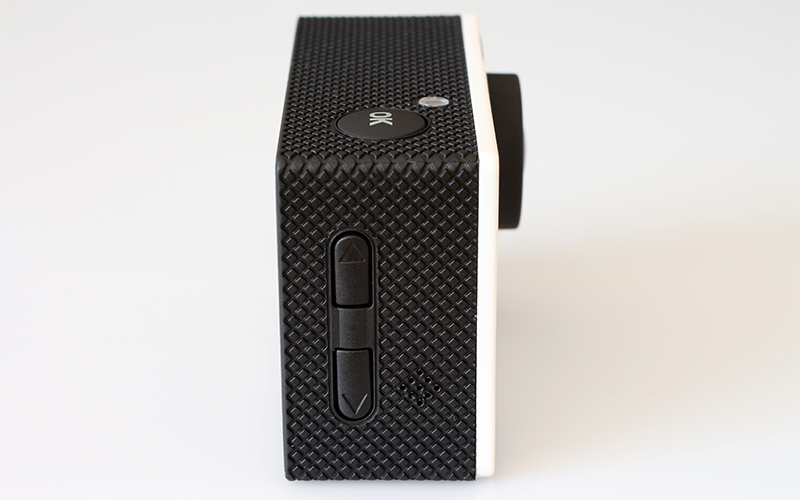
Two buttons on the right side are used to access the menu and change from video to photo shooting mode. The speaker cutouts are also on this side.
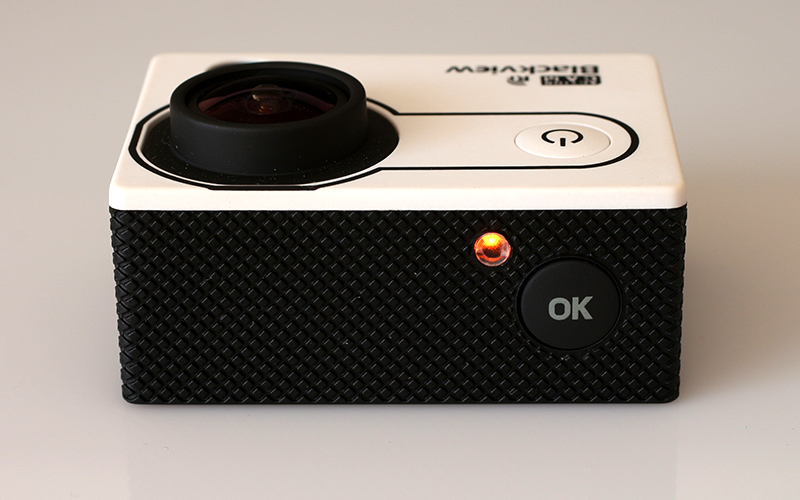
The top features a single button which doubles as the recording start/stop button and OK button to confirm selections in the menu, and an orange LED that lights up when the camera is switched on.

The battery compartment is on the bottom of the camera, and it’s covered by a thin plastic flap.
The rear side of the camera is dominated by the 2-inch LCD in 480x240 and two status LEDs on the left edge of the camera. The upper LED lights up in blue when the camera is recording, while the lower LED glows red when you charge the device.
The build quality is good. The camera feels well assembled and sturdy, with no creaking on any part of the housing. We also liked the finish of the black camera frame, as it provides very good grip and does not attract fingerprints and smudges.
There is a small gap visible in the lower front corner, right below the lens, but it doesn’t flex or move around under stress. Our only complaint regarding the build quality goes out to the two menu buttons on the right side of the camera. These buttons feel flimsy and provide very little in the way of feedback, especially when compared to the other two buttons on the camera that feel great. Another concern is the protruding lens that could easily be scratched when carrying the camera without the protective casing, for example in your backpack or bike bag. We think that a cheap silicone lens cap should be included in the package with the rest of the accessories. After all, the bundle is impressive already, so an additional lens cap probably wouldn’t drive the price up at all.
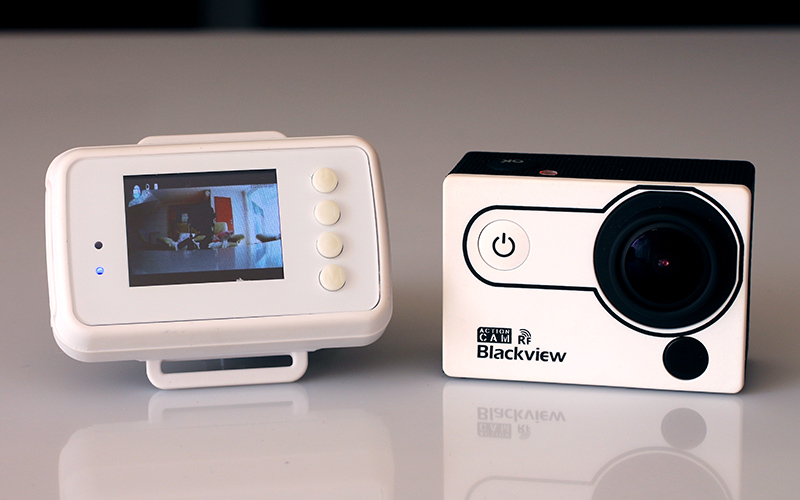
The RF remote is a very nifty feature. It enables full control of the camera from a distance of up to 10 meters, and also transfers the live image from the camera LCD to the 1.5” remote LCD.
The remote can be placed on the wrist and it makes a lot of sense when you mount the camera on your helmet, losing access to the LCD and buttons. The remote has four buttons on the top, two status LEDs and a small LCD, while the right side houses the micro USB charger connector.
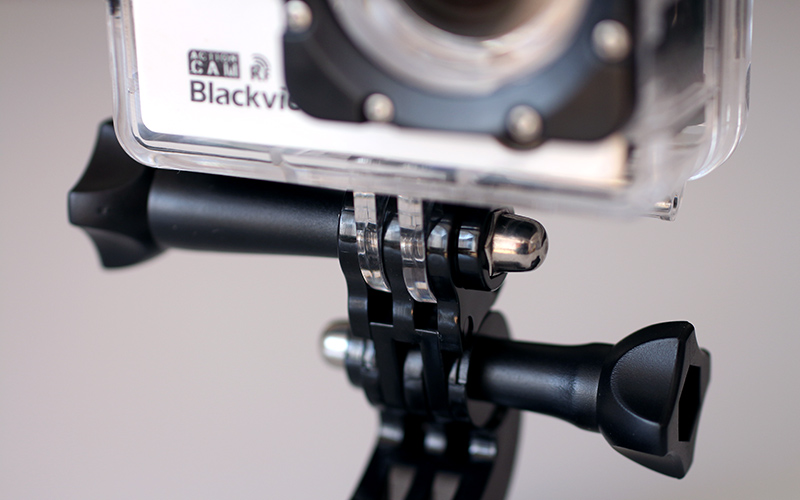
The transparent protective camera case features a standard GoPro mount and it is waterproof up to 30 meters. It fells durable and should be able to protect the camera from just about anything it’s likely to experience in everyday use. Using the protective case adds another 93 grams to the weight of the camera. All the other mounts and accessories also have a quality feel to them and they function fine.
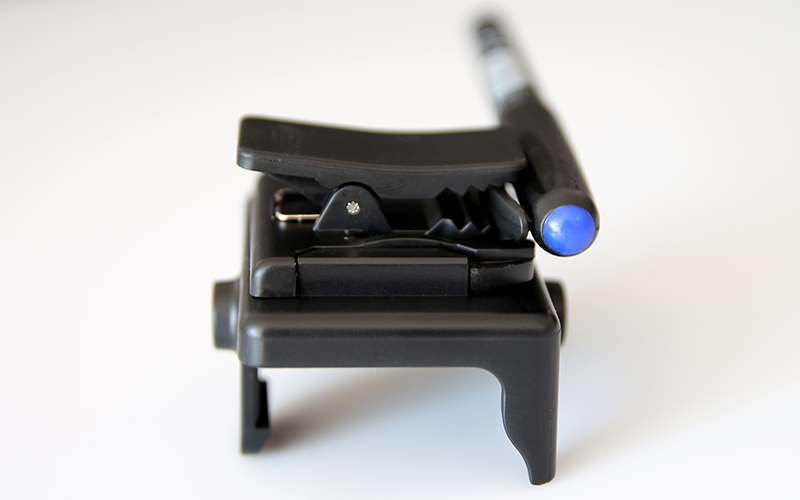
While they are good, they are by no means perfect. The protective case can sometimes throw a reflection of the sun to the upper corners of the lens. This is visible in some of our sample shots. Secondly, the clamp that is included can only be fitted to the back of the skeleton case, and the clamp itself is small and it cannot grip anything thicker than 5-6mm. Even if you manage to clamp it on to something, you can’t adjust the angle of the camera. It would be better if a larger clamp, with a standard GoPro mount, was included instead of this one.
Video and Photo Capabilities
As we mentioned earlier, the Blackview Hero 2 supports different video recording modes, and they are illustrated in the following image:
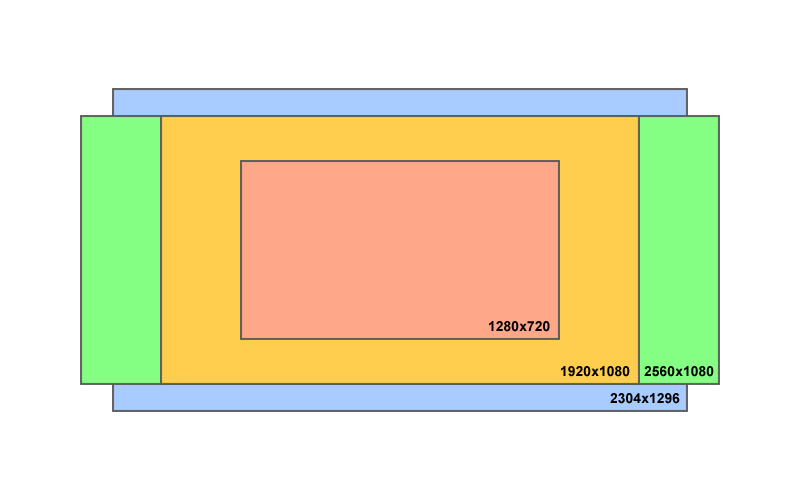
The recorded video looks nice, color balance is also good and direct sunlight in the lens does not create any problems (this is very important since you are dealing with a 170-degree lens).
Fast moving objects are captured well, as all video modes are recorded in progressive scan. Low light performance is also good, and the camera adapts to different lighting conditions very quickly. The camera uses a 4-megapixel 1/3” sensor with a pixel size of 2.0µm. Most sports cameras use somewhat smaller smartphone camera sensors, with a higher pixel count, but smaller pixel size.
Of course, the darker it is, the more grain you get in the image as with all digital cameras, but it is well controlled and the 2.0µm sensor does a rather good job (most smartphone camera sensors have 1.1-1.2µm sensors. You can see a few sample shots here.
We managed to get 1 hour and 11 minutes of non-stop recording at 1080p 30fps with a fully charged battery and the camera LCD turned off, which is within manufacturer specifications. It is a quite good result.
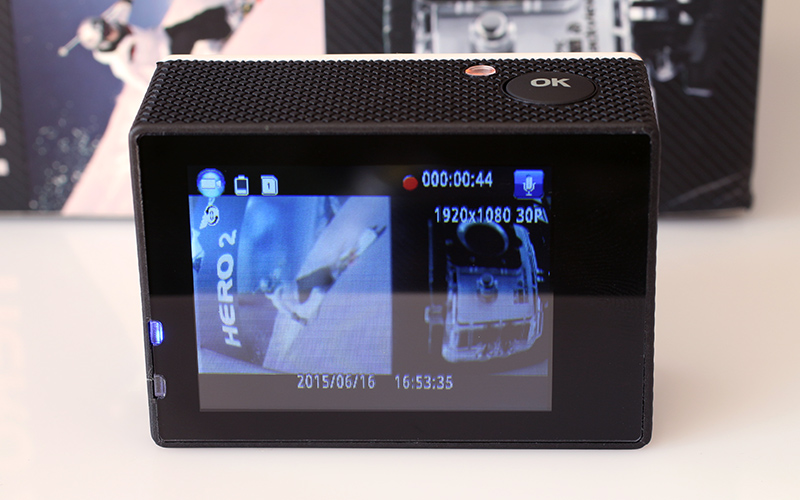
The videos are recorded at 10 - 14Mbps, which is on par with most entry-level consumer camcorders, so make sure you use a speedy MicroSD card. Do not go for the cheapest one available.
Audio recorded with the Blackview Hero 2 is not bad, although it is a bit on the quiet side. When you are recording with the protective case and the waterproof back door you can almost forget about audio, as the camera is hermetically sealed. If you use the other back door with cut-outs, camera will manage to capture a bit muffled audio. However, before dipping the camera in water, make sure you are not using the cover with audio cut-outs – otherwise you will have a very bad day.
Since the image sensor has a native resolution of 4 megapixels in 16:9 aspect ratio, we decided to test the photo capabilities at its native size.

The size of the sensor helps deliver relatively good results in low light, proving once again that it's not just about the megapixel count; pixel size matters too.
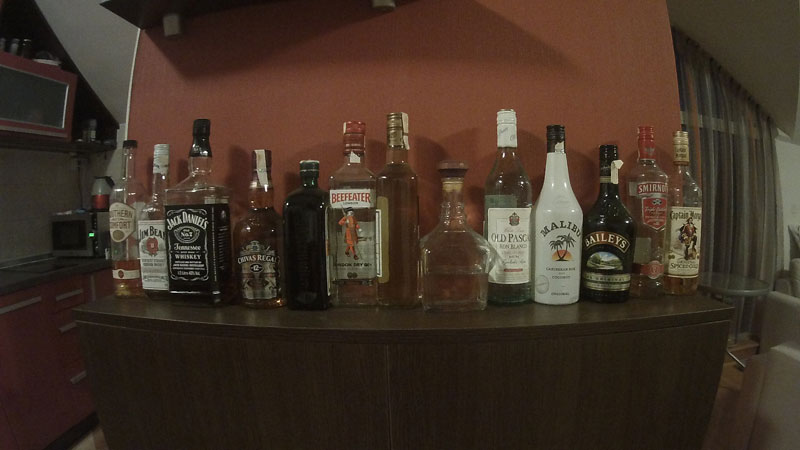
On the photo side of the things, we did miss the time lapse and burst options for creative photography and video effects, and we can only hope for a firmware update that adds these features.
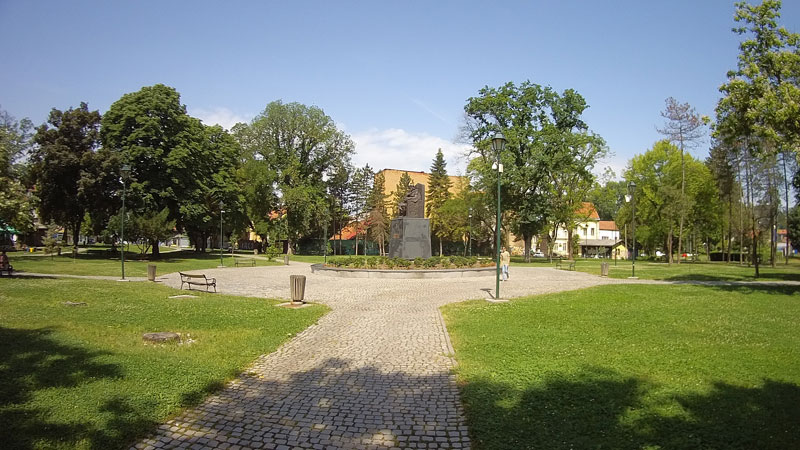
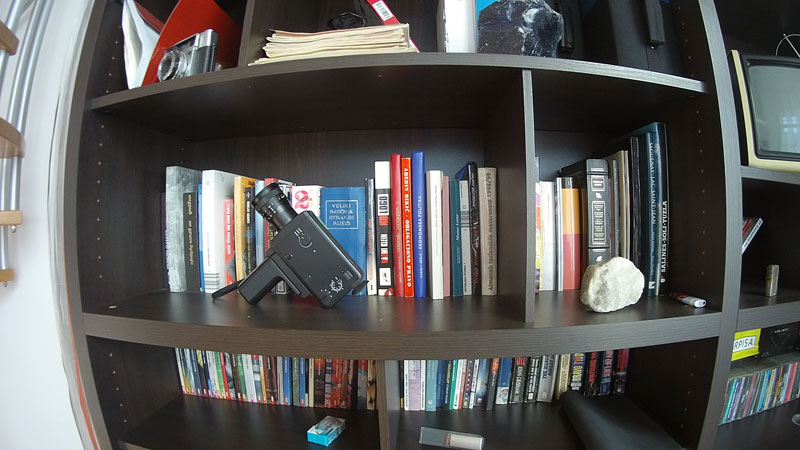
As you can see, the fisheye effect is very visible when you shoot something up close.
Advanced use and special effects: slow motion, video stabilization
While extreme wide angle lens are useful in recording sports and action shots, they are not ideally suited for traditional camcorder-style video shots.
At first, we decided to try editing and post processing videos recorded with Blackview Hero 2 to get slow motion shots. The following clip was recorded at 1080p 45fps and then slowed down to 25fps.
The slow motion shot looks very nice and this can be easily utilized for some home video fun. Oh, and if you are thinking about calling an animal rights group, trust us, the canine in the frame enjoyed it.
Then we tried processing a clip shot hand-held at 2.7K 2304 x 1296 29.97 fps during a bumpy tourist ride through the city. Our goal was to get rid of the wide angle look, so we tried cropping the 2.7K video to 1080p. Our NLE video editing suite automatically scaled the 2.7K video down to fit 1080 HD size when we placed the clip on the timeline, so we manually returned the scale to 100% and got rid of the wide angle distorted edges.

After that, we thought that 2.7K sized video being larger than 1080 HD could be useful for the image stabilization plugin, so we applied it as well. It turned out pretty nice and we were surprised with the results, as you can see in the sample video.
We can clearly recommend recording at 2.7K 2304x1296 for advanced users who intend to edit and post-produce their videos. The resolution gives you more options and flexibility in editing: you can zoom in or out, you can change the framing of the shot if necessary, or stabilize the shot. For everyday casual recording and uploading to Youtube and Facebook, 1080p at 30fps will do just fine.
Conclusion
The Blackview Hero 2 RF ships with a very generous bundle and, on the face of it, offers good value for money. It compares favorably to GoPro Hero cameras in terms of pricing, and can hold its own against Xiaomi and SJCAM cameras.
Priced at $139, the Hero 2 RF is available for $119 via Gearbest, using the GBHERO2 coupon. In terms of value, it looks like a very good alternative to big brand action cameras – it boasts a good chipset, relatively fast lens and oversized sensor. However, it’s let down by the firmware, which simply lacks a number of features advertised by Blackview. One can only hope that a firmware update will sort this out, but for the time being this means you can’t use burst mode, timelapse and a few other functions.
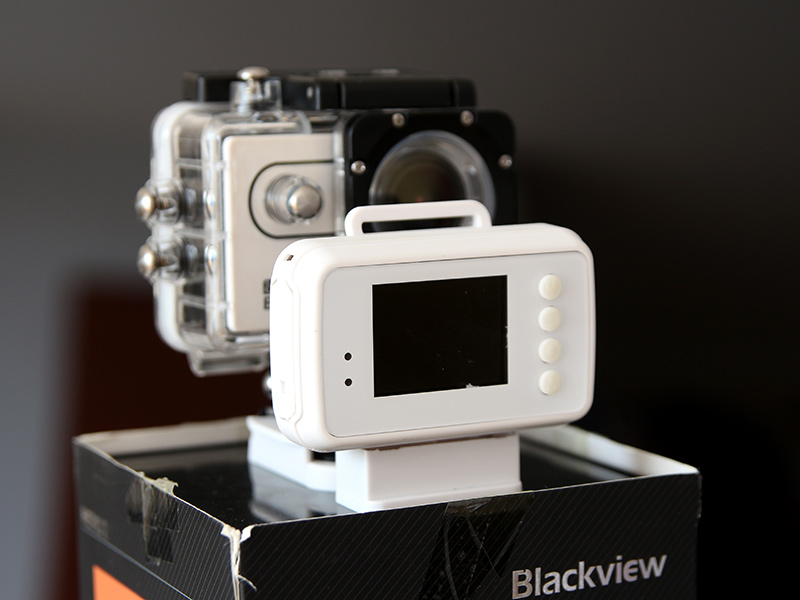
The addition of an integrated screen and a remote screen will probably appeal to a lot of people who don’t want to film their exploits without a proper viewfinder. With the Blackview Hero 2 RF you get not one, but two decent viewfinders, giving you a lot more flexibility. The big bundle also means you can install the camera pretty much anywhere, without having to order additional accessories. The only thing missing is a silicon lens cap.
We did not like the confusing product specifications – the spec is different on the product retail packaging and the manufacturer’s web site. For example, the retail box claims 2 hours of continuous recording, while the web site claims 1 hour. However, our biggest complaint is the firmware – it shouldn’t be that hard to sort out, yet it would make the camera much more appealing. If Blackview rolls out a firmware update and irons out all the kinks, it could have a winner on its hands.
Blackview Hero 2 RF Pros and Cons
Pros:
Value for money
Very generous bundle
Good sensor performance in low light
Integrated viewfinder, remote viewfinder
Cons:
Firmware lacks a few advertised features
Confusing and inconsistent product spec
Battery life could have been better

